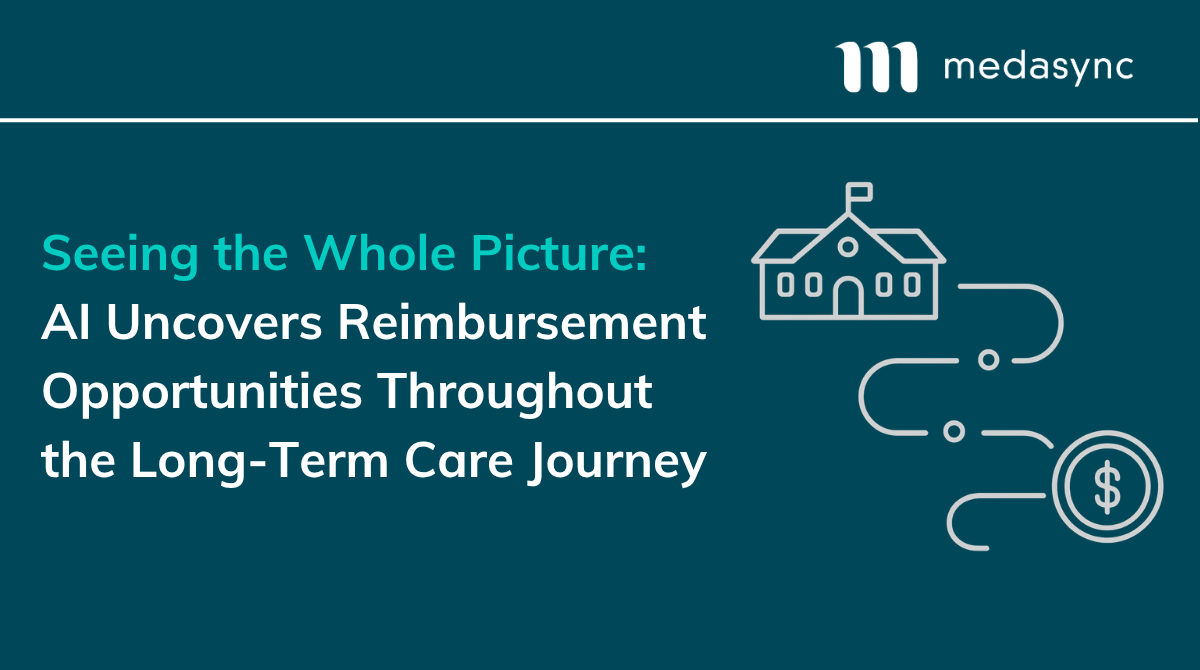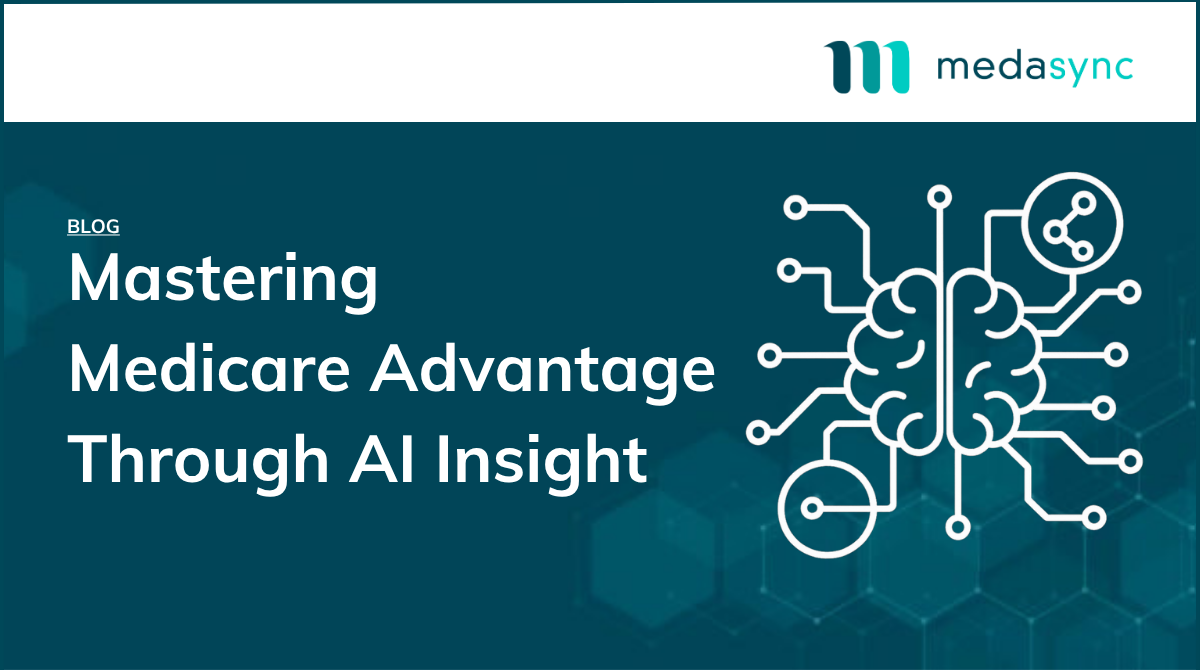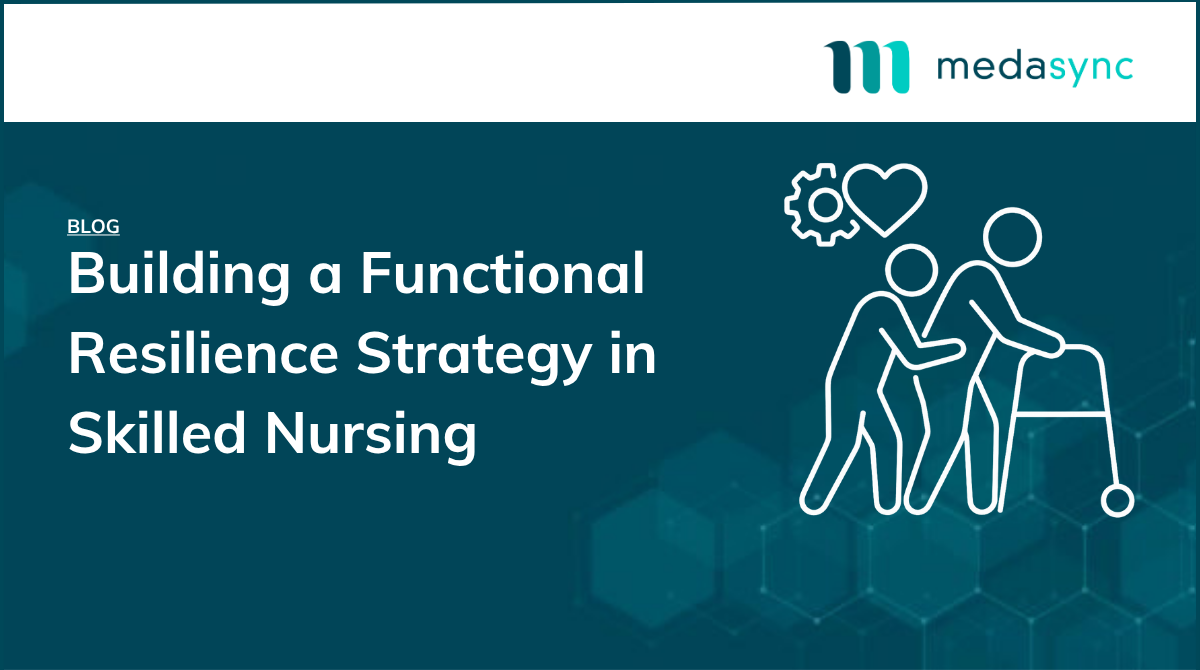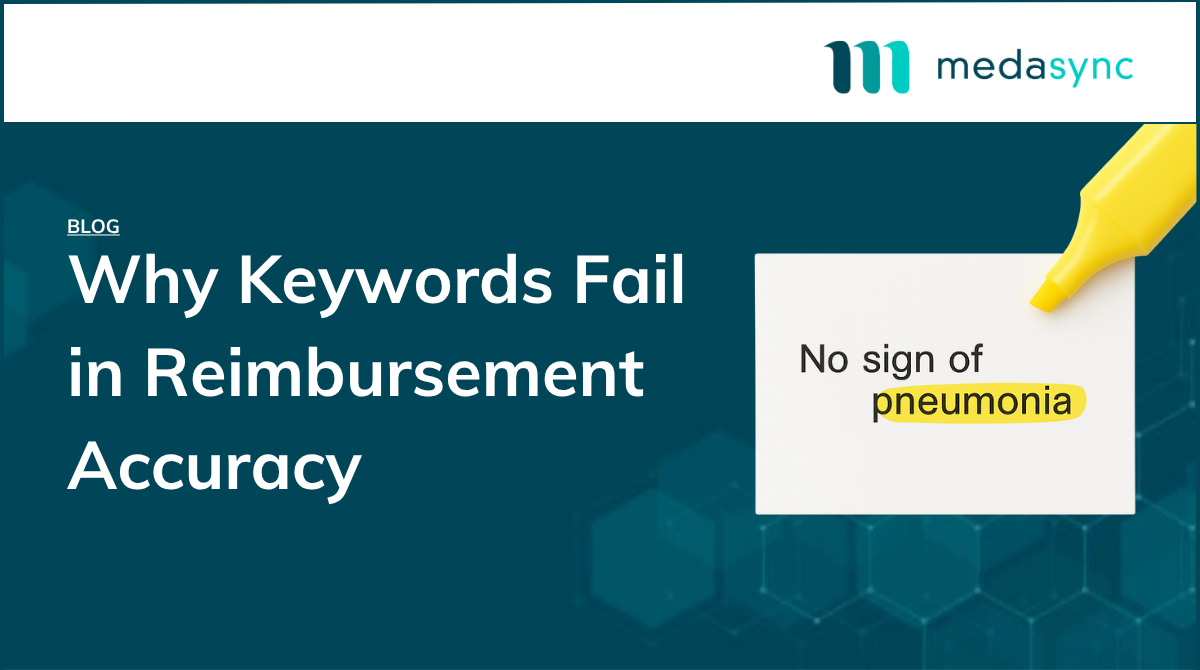Seeing the Whole Picture: AI Uncovers Reimbursement Opportunities Throughout the Long-Term Care Journey
In long-term care, reimbursement accuracy isn’t a one-time event. It’s a continuous process that evolves as a resident’s needs and payer requirements change. From admission to discharge, every assessment, update, and transition creates a potential opportunity — or risk — for your facility’s bottom line.
But in most organizations, those opportunities are difficult to see. Critical details get buried in documentation. Payer changes move faster than staff can track. What’s reimbursable isn’t always clear from what’s written.
One MedaSync customer summed it up simply: “We weren’t losing revenue because of what we did. We were losing it because our documentation didn’t tell the whole story.”That’s the problem MedaSync’s payer-aware AI agents were built to solve. Using natural language processing (NLP) and machine learning, MedaSync interprets clinical documentation the way a clinician — and a payer — would. It connects context to coding, helping teams identify legitimate reimbursement opportunities at every stage of care.
Getting It Right from the Start: Admission and Intake
Reimbursement begins with admission. Hospital discharge summaries, intake assessments, and early progress notes establish the foundation for accurate coding and payment. But key clinical details often get missed.
As one Director of Nursing put it, “Our team did a great job collecting data, but so much of the real story lived in the notes. We didn’t always catch what mattered for reimbursement.”MedaSync’s payer-aware AI agents automatically review early documentation, identifying chronic conditions, recent hospitalizations, and clinical risk factors that influence PDPM and payer classification. By surfacing those insights before the first assessment is finalized, facilities start each resident’s stay with a clear and complete picture. Learn more about AI for reimbursement accuracy in long-term care.
Starting Early: Identifying High-Cost Carve-Outs from Day One
Some of the most valuable reimbursement opportunities in long-term care are tied to high-cost medications, IV therapies, wound vac supplies, or respiratory treatments — but only if they’re identified and documented early.
That’s where MedaSync makes the difference. Its payer-aware AI agents detect carve-out opportunities right at admission, flagging treatments or conditions that may qualify for separate reimbursement under Managed Care or Medicaid contracts.
By surfacing these opportunities on day one, teams can proactively plan documentation, treatment tracking, and payer communication — instead of discovering missed revenue after discharge.
One MedaSync customer put it best: “Those high-cost meds used to sneak up on us at the end of a stay. Now, MedaSync flags them before the first claim is even filed.”
That proactive insight ensures every qualified carve-out is supported, documented, and reimbursed — from the very start of care.
Keeping Up with Change: Ongoing Documentation
A resident’s condition rarely stays the same. Wounds heal or worsen. Therapies start or stop. Medications change, or infections require IV antibiotics. Each of these updates carries reimbursement implications — if they’re identified in time.
The problem is that most systems rely on structured data, while the most important details are written in narrative notes.
A reimbursement specialist shared, “We read thousands of notes each week. Before MedaSync, we knew we were missing things — we just couldn’t find them fast enough.”
MedaSync’s payer-aware AI agents continuously analyze documentation, identifying meaningful clinical changes as they occur. They understand context — distinguishing between “history of pneumonia” and “active pneumonia” — ensuring that reimbursement aligns with real-time resident status.
Smarter Reviews: Strengthening the MDS Process
When it’s time for an MDS review, accuracy depends on how well documentation reflects the resident’s clinical picture. Missing or inconsistent details can lower case-mix scores and create audit risk.
MedaSync bridges that gap through the MedaSync platform, which aligns documentation with MDS data, flags inconsistencies, and surfaces overlooked conditions that may warrant inclusion. For example, missing documentation of swallowing issues or IV medication use can lower a resident’s case mix classification.
A facility CFO explained, “Before MedaSync, we’d finish an MDS and then discover missed items later. Now, the AI highlights them before they cost us.”
The result is a faster, more confident review process — one grounded in accuracy, not assumption.
Navigating Complexity: Payer Transitions
When residents move between payers — from Medicare to Managed Care or Medicaid — the rules change. Each payer has unique criteria, coverage policies, and documentation requirements. Managed Care plans often require more narrative justification or pre-authorization evidence — and payer-aware AI helps identify and align those details automatically.
This is where MedaSync’s payer-aware AI agents stand out. For a deeper look at process design, see where AI belongs in the reimbursement workflow. Before a claim is submitted, the AI flags missing details or inconsistencies that could delay or reduce payment.
An administrator said it best: “When a resident transitions, MedaSync already knows what the next payer is looking for. It’s like having someone on staff who speaks every payer’s language.”
That consistency ensures the resident’s story — and your reimbursement accuracy — remain intact throughout the care continuum.
Maintaining Precision During Long-Term Stays
For residents who remain in care for months or even years, documentation grows exponentially. Important details can fade into background noise as progress notes accumulate. For example, a resident developing chronic respiratory issues or requiring increased assistance with ADLs may warrant reassessment and case-mix adjustment.
MedaSync’s AI reviews those records continuously, identifying subtle changes that might justify reassessment or case-mix adjustment. It learns each facility’s documentation style and filters out irrelevant information, surfacing only what matters.
A clinical reimbursement manager shared, “We used to catch missed opportunities weeks after the fact. Now, MedaSync identifies them in time to make a difference.”
That proactive intelligence turns documentation into a strategic asset, not just a compliance record.
Why Context Matters to Understand the Full Story
Reimbursement accuracy in long-term care depends on seeing the full story. From admission to discharge, MedaSync’s payer-aware AI agents help facilities identify every legitimate reimbursement opportunity and align clinical accuracy with financial integrity.
When you can see the full picture, you can finally capture the value you’ve already earned.
Across every phase of the reimbursement workflow, context is what drives accuracy. MedaSync’s payer-aware AI agents don’t just search for keywords — they understand language, timing, and payer intent.
That’s how long-term care organizations move from reactive reimbursement corrections to proactive financial intelligence. Instead of discovering missed opportunities after the fact, MedaSync empowers teams to act while the data is fresh and actionable.
As one partner put it, “It’s like having another set of eyes that never misses what matters clinically or financially.”
Learn how MedaSync helps long-term care organizations uncover every reimbursement opportunity from intake to discharge and every payer in between.





